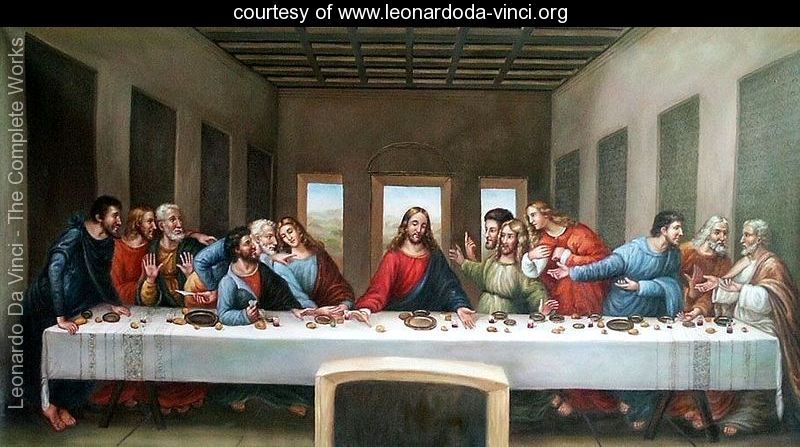The Middle of Christ’s Passion Week
“When Jesus had finished all these sayings, he said to his disciples, ‘You know that after two days the Passover is coming, and the Son of Man will be delivered up to be crucified…’ Now on the first day of Unleavened Bread the disciples came to Jesus, saying, ‘Where will you have us prepare for you to eat the Passover?’ He said, ‘Go into the city to a certain man and say to him, “The Teacher says, My time is at hand. I will keep the Passover at your house with my disciples.’” And the disciples did as Jesus had directed them, and they prepared the Passover” – Matt 26: 1-2, 17-19 ESV
My Thoughts:
On Thursday evening Jesus and His disciples celebrate Passover– what we call the Last Supper because it’s the last meal Jesus will eat — in an upper room of a house. Since 11 of the 12 were northern Jews from the region of Galilee (except for Judas), they calculated days from sunrise to sunrise, making Thursday evening Passover for them. During the Passover meal Jesus institutes the Lord’s Supper of bread and wine. The Passover bread now represents His body broken for them and the Passover wine represents His blood shed for the forgiveness of their sins.
In other words, Jesus gives a new interpretation to the Passover meal. He uses the language of the temple sacrificial system to say that He is the New Sacrificial Lamb of God. And through Him God will act in one final Great Exodus, institute a New Covenant, and lead them to a New Promised Land, a new creation of which His miraculous healings were signposts. In Jesus, God will act to save His people once and for all by overthrowing the enemy of Satan and freeing them from slavery to sin. For Jews, part of the reason for celebrating Passover— which marked the end of their slavery in Egypt— was the hope that God would do so again. The time had come for God to rescue the world, not from earthly enemies, but from evil itself and to free them from the sin that had enslaved them. Jesus’ death would do what the Temple and its sacrificial system had been a signpost of, pointing towards the day when atonement was finally accomplished.
Jesus then washes the disciples’ feet, as a servant would do. Afterwards, they travel to the garden of Gethsemane just outside the city walls of Jerusalem. There, Jesus is betrayed by Judas and taken away by soldiers and officers of the chief priests. He is set before the council of the Jews and eventually sentenced to death for misleading the nation and blaspheming God by agreeing that He is the Messiah and the king of the Jews.
Action:
When you get a hankering to talk or complain about what you gave up for Lent, replace that hankering by speaking the Word of God. And for all the times you would have done the activity that you gave up for Lent, replace it by reading the Word of God. In this way, you will be drawing closer to God.
Prayer:
God of holiness and light, in the mystery of the dying and rising of Christ, you have
established a new covenant of reconciliation. Cleanse our hearts and give a new spirit
to all your people, that your saving grace may be professed and proclaimed to the
whole world; through Jesus Christ our Lord. Amen.
